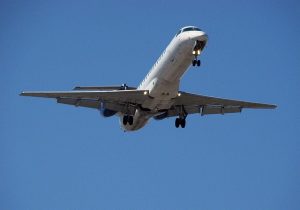
Landing an airplane requires extreme precision. A typical runway is only about 50 to 200 feet. With external factors like crosswinds, rain or fog present, landing on such a small area can prove challenging. Fortunately, pilots can take advantage of modern technologies like a localizer to land safely.
Overview of Localizers
Localizers are systems in Instrument Landing Systems (ILSs) that provide horizontal guidance. It’s designed to help pilots align the airplane with the runway’s centerline during a landing approach.
The centerline is the centermost point of a runway. It typically consists of a set of white-painted dashed lines. Some airports also have lights at the centerline. The lights will remain white until the last 3,000 feet. After this point, they will begin to flash red and white. Finally, the lights will remain solid red for the last 1,000 feet.
Whether illuminated or non-illuminated, the centerline is the centermost point of a runway. When preparing to land, pilots will “aim” for the centerline. It’s typically the strongest and safest part of the runway. The localizer helps pilots identify and navigate to the centerline during the approach.
How Localizers Work
Localizers work via ground-based ratio antennas. These antennas are positioned past the end of the runway. There’s typically one antenna to the left of the centerline and another antenna to the right of the centerline. The antennas transmit overlapping radio signals on the same frequency.
Airplanes have an onboard navigation receiver that works in conjunction with the ground-based radio antennas. It essentially compares the two signals sent from the antennas. If the receiver finds that both signals are the same strength, the airplane is aligned with the runway’s centerline. If one of the signals is stronger, on the other hand, an indicator in the cockpit shows whether the airplane is too far left or right. The pilot can then take the necessary action to correct the airplane’s course and bring the airplane to center.
Localizer vs Glide Slope
The localizer is only one component of an airplane’s ILS. Another component is the glide slope. They are both used during landings, but localizers and glide slopes have different purposes.
The localizer provides horizontal guidance to help pilots find and maintain the centerline. The glide slope, in comparison, defines the correct angle of descent. It leverages its own set of radio signals, which provide pilots with the correct angle of descent.



